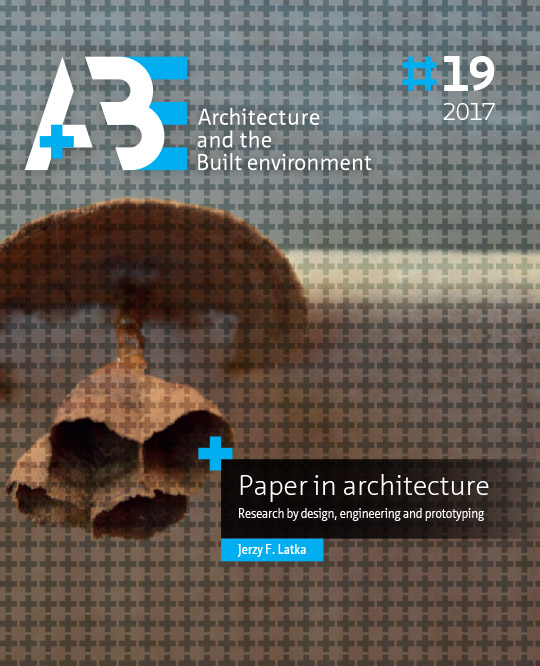Paper
History, production, properties and products
DOI:
https://doi.org/10.7480/abe.2017.19.3756Abstract
Paper is a material we know from our day-to-day lives because it is used in newspapers, tissues, packaging, etc. Its web-like structure consists of wood fibres and can be visualised by comparing it to the cooking of a portion of spaghetti that is later served onto a plate.
Paper is often associated with traditional materials and production technologies. Brought to life in the second century AD, paper has had a significant role in the history of civilisations, from the Chinese empire through the Guttenberg era up to the current ‘digital age’. It has primarily been used as an information carrier and packaging material. However, the architectural applications of paper have been known since the eighth century AD.
Although production technologies and the finish of paper have changed and improved over the years, paper has in fact remained remarkably the same through the centuries. It still has the same composition: cellulose fibres bonded in a wet environment, then pressed and dried. Recently, not only the paper-making industry has undergone change, but other industries, like architecture, electronics, the automotive industry and others, are also receptive to the innovative qualities of paper.
Growing awareness of the scarceness of fossil fuels and natural resources, the need to curb CO2 emissions and the necessity of reducing the ecological burden caused by the use of materials such as plastics, foam, concrete or steel is encouraging people to find more environmentally friendly solutions, including the circular economy.
Paper and its derivatives can satisfy these needs, although it seems that the golden age of paper is coming to an end. Electronic devices such as smartphones, tablets and e-readers, as well as the growing popularity of electronic media, have taken the place of traditional print media, which has resulted in the paper industry’s decline as the producer of information carriers. However, the paper industry can develop in other directions, e.g. smart packaging, the provision of energy and construction materials, where this renewable and cheap material can make a new start, using and being used along with new technologies and innovations.
Sustainable development was first described in the Agenda21 document in 1992 and its appendices, which state that the most important challenges for global policy are improving people’s lives and conserving our natural resources in a world that is growing in population, with ever-increasing demands for food, water, shelter, sanitation, energy, health services and economic security. Moreover, the European Parliament and the Council of the European Union ordered in Directive 2008/98/EC that by 2020, the weight amount of recycled or re-used construction waste must be increased to a minimum of 70%.
These challenges can be addressed by renewable resources – reusable, recyclable, available and affordable materials, among other things. One of these renewable resources is paper.

